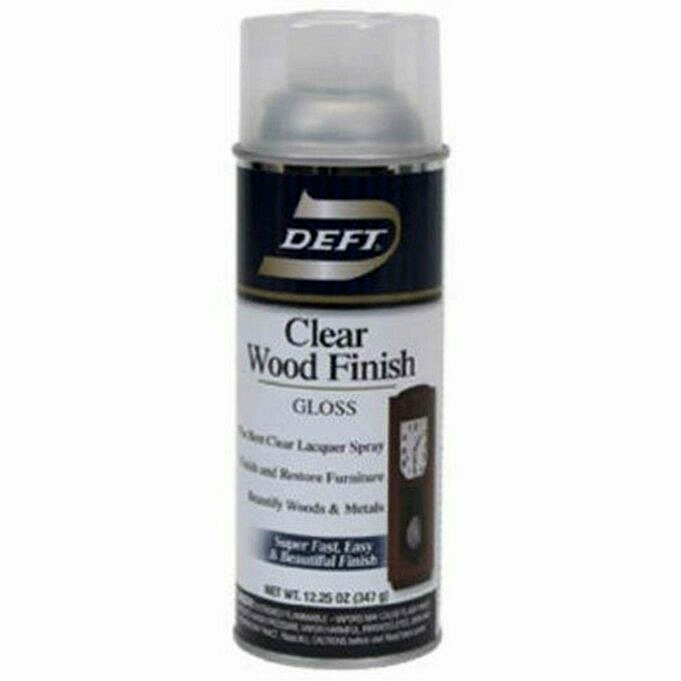- When finishing anything bigger than a turning, we recommend you purchase an accessory trigger unit for your aerosol cans, as pictured above. These units are affordable (about ), efficient, and readily available at most home centers.
Aerosols make possible the packaging of various finishing products in convenient, easy-to-use containers. The packaging raises the price of these products compared to using them in a spray gun, but the convenience of aerosols is so great that its rare to find a professional finish shop without a shelf full of them.
Aerosols are also used by amateurs to replace expensive spray guns, provided that there isn’t too much finishing. Aerosols work well for small projects.
Most popular finishes are packaged in aerosols in sheens ranging from gloss to flat. These include polyurethane, shellac, waterbased finish, lacquer and pre-catalyzed lacquer. Pre-catalyzed Lacquer is a faster-drying lacquer than lacquer. It’s often used for kitchen cabinets and office furniture. Aerosols can also be used to package other useful products such as blush removers and toners, sanding sealers and toners.
Aerosols have the same finishes as spray guns, but they are thinner to fit through the tiny hole in the nozzle. To achieve the same film thickness with an aerosol, you will need to spray twice as many coats than with a sprayer.
Local paint stores and home centers rarely stock many aerosols, but you can find a large selection at Wood Finishing Supplies(866-548-1677 or woodfinishingsupplies.com).
How to spray aerosols
Aerosols have the same application advantages spray guns have when compared to brushes: speed and better appearance. Spraying a finish is faster than brushing it. Also, spraying creates a smoother surface than brushing which can leave pronounced brush marks.
Spraying an aerosol with a spray gun is nearly identical to spraying with one. It is important to set up the aerosol and lighting so that you can see the reflections in the spray area. You will be able to tell if you spray correctly a coat that is not too wet so it runs or puddles. You can adjust the distance between your work area and where you spray the aerosol to get a good result. Practice on scrap wood or cardboard until you feel comfortable.
Spray a few inches from the surface to avoid any puddles or runs. Continue spraying beyond the edge. To avoid spraying too fast, keep the aerosol moving and your finger away from the hole in thenozzle. Spraying large, flat surfaces like a tabletop requires that you spray the first pass at 50 percent from the front edge. Then spray 50 percent further on. Then overlap this pass entirely with the second and continue overlapping each additional pass by 50 percent.
Last, you should make your last pass at the back edge. Make sure to keep 50 percent of the edge off and 50 percent overlap the next-to-last. By doing this, each part of the surface will receive a second application.
To further ensure an even thickness, perform the same routine again, this time by working perpendicular to the first passes. Every part of the surface will then have received four applications of finish.
Recommendations for Product
These are the tools and supplies we use every day in the shop. We may receive a commission from sales referred by our links; however, we have carefully selected these products for their usefulness and quality.



